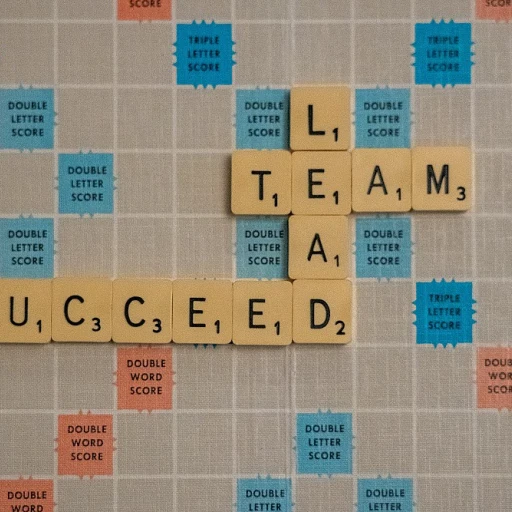
Understanding the Importance of a Welcome Letter
The process of establishing a positive experience for new hires begins as soon as they join the company, and the welcome letter plays a crucial role in setting the tone for this journey. An effectively crafted welcome message can ease a new employee’s anxieties about starting a new job and significantly enhance employee engagement from day one. It helps new team members feel connected, valued, and integrated into the company's culture, paving the way for a smoother onboarding process.
A warm and thoughtful welcome letter serves multiple purposes. It introduces the company and its culture to the new employee, providing them with essential insights into what makes the company unique. Additionally, it acts as a powerful tool in the employee handbook, highlighting the company's dedication to making new employees feel at home within the organization.
Moreover, in today's competitive job market, a well-written welcome letter is aligned with broader recruitment strategies. It reflects the company's commitment to employer branding, enhancing the recruitment process by showcasing the company's values and mission. For more on how branding impacts recruitment, consider reading this insightful article on employer branding transformation.
Welcome letters also offer practical benefits by including details like the new hire's job title, starting date, and key contacts within the team. This information is essential in helping newcomers fill any knowledge gaps before their first day, ensuring they arrive prepared and informed. By integrating such details, the welcome letter becomes an invaluable part of the welcome packet, which might include additional resources, such as templates for company procedures or an outline of the first week's activities.
Key Elements of an Effective Welcome Letter
Essential Components for a Warm Welcome
Creating a comprehensive welcome letter sets a positive tone for new hires and facilitates their integration into the company culture. A well-crafted letter employee message is an invaluable part of the onboarding process. Ensure it includes the following key elements to make new employees feel part of the team even before they start:
- Subject Welcome: A concise and welcoming subject line immediately engages the new employee, expressing excitement for their joining.
- Warm Greeting: The letter should begin with a friendly "Dear Employee," showing a personal touch that conveys warmth and sincerity.
- Job Title and Start Date: Remind new team members of their job title and start day, offering clarity as they prepare to join.
- Introduction to Company Culture: Briefly describe what makes the company unique, helping new hires identify and align with core values and expectations.
- Welcome Team Contacts: Provide contact details of key team members they will work with. This fosters an immediate sense of inclusion and support.
- Onboarding Resources: Mention where they can find the employee handbook or welcome packets, helping them navigate their first days effectively.
- Encouragement and Enthusiasm: Conclude with a positive "welcome message" that emphasizes the company's excitement about their contribution and growth within the team.
To improve employee engagement right from the beginning, consider using a letter template to maintain consistency while allowing for personalization. Designing a template that can be filled with personalized elements ensures a balance between efficiency and the personal touch that defines an impactful onboarding experience. Consider how understanding the costs involved in hiring a recruiter can also play a role in optimizing onboarding strategies, including crafting impactful welcome letters.
Personalizing the Welcome Experience
Creating a Tailored Welcome Message
Crafting a welcome letter that speaks directly to your new employee is essential in providing a personalized welcome experience. Addressing the new hire by their job title and highlighting specific information related to their role will help them feel immediately connected to the company. This personalized touch sets the tone for an inviting and inclusive onboarding process. In your welcome letter, consider including:- Personalized Greeting: Begin with a warm and personalized greeting, such as "Dear employee," followed by their name. This immediately makes the recipient feel recognized and valued.
- Job Role Highlight: Mention their specific position within the team and department. This will affirm their vital role in the company’s mission and goals.
- Company Culture Introduction: Briefly introduce the company culture, sharing aspects that make your company a unique place to work. Highlight relevant points from the employee handbook.
- Onboarding Process Overview: Give an overview of the onboarding schedule and key activities they can expect on their first day at work. Highlight the members of the welcome team who will help guide them through this process.
- Contact Information: Provide contact details for HR or the new hire's direct manager, should they have any immediate questions or require assistance.
Integrating Technology in Welcome Letters
Infusing Technology for a Seamless Welcome
In today's digital age, integrating technology into the welcome process is a strategic move that can greatly enhance the onboarding experience for new employees. By utilizing various digital tools, companies can create an efficient and engaging introduction to the organization that aligns with employees' expectations.- Automated Welcome Messages: A personalized, automated welcome letter sent to a new hire's email can set a positive tone from the start. This task can be simplified using email automation tools, ensuring the message arrives promptly on the new employee's first day.
- Digital Welcome Packets: Transitioning from traditional paper packets to digital formats immediately introduces the company's tech-savvy side. A well-organized digital welcome packet can include essential documents such as the employee handbook, contact lists, job title descriptions, and a company culture guide, making information easily accessible.
- Interactive Onboarding Platforms: Leveraging interactive platforms as part of your onboarding process can help new team members feel connected even before they physically start their job. Platforms that allow employees to explore company values, complete necessary paperwork, and meet teammates virtually foster engagement and reduce first-day jitters.
- Customizable Letter Templates: Platforms that offer template customization allow HR to tailor welcome letters to reflect specific roles or departments. This not only enriches the personalization aspect but also ensures that crucial information relevant to the individual employee's role and responsibilities is highlighted.
- Video Welcome Messages: Incorporating a video message from a company leader or team members can create a sense of connection and belonging. It adds a personal touch that text alone might not convey, making new hires feel more welcomed and valued as part of the company culture from the outset.
Common Mistakes to Avoid
Recognizing Potential Pitfalls in Welcome Letters
Creating a welcome letter for new hires is an essential part of the onboarding process, but it's easy to fall into certain traps that can undermine its effectiveness. To ensure a positive start, awareness of these common mistakes is crucial.- Generic, Outdated Templates: While it might be tempting to use a pre-existing letter template, this can result in a generic message that fails to make new employees feel valued. Update your templates regularly to reflect current company culture and priorities, ensuring each letter feels fresh and relevant.
- Overwhelming with Information: Including too much information can be counterproductive, as it may overload and confuse the new employee. Focus on essential details in the welcome letter, and provide an employee welcome packet or employee handbook for additional context on company policies and procedures.
- Lack of Personalization: Personalizing a welcome message can make new hires feel truly welcomed and integral to the company. Avoid addressing the letter as 'Dear Employee' and use the employee's name and job title. In addition, welcome them to specific team members they'll be working with.
- Neglecting the Company Culture: The tone of the welcome letter should reflect your company culture. Whether it's casual, formal, or somewhere in between, consistency in communication style helps set expectations and align new hires with the workplace environment.
- Inconsistent Follow-Up: A welcome letter is just the start of the onboarding process. If there's no follow-up or integration with other onboarding steps, like a welcome team initiative or a subject welcome session, new employees might feel disconnected.
Measuring the Impact of Welcome Letters
Assessing the Effectiveness of Your Welcome Letters
Measuring the impact of welcome letters is crucial in refining an onboarding process that genuinely resonates with your new hires. To ensure that your welcome packet and letter templates effectively convey your company culture and make new employees feel welcomed, follow these key steps:- Feedback Collection: Consider reaching out to newly onboarded team members a week or two after their start day. A simple, yet direct question like, "How did the welcome letter and packet make you feel about starting your new job?" can provide actionable insights.
- Survey Tools: Utilize survey platforms to gather structured employee feedback. This can help identify common trends in how welcome letters are received and understood. It's beneficial for continually improving your employee engagement strategy.
- Monitor Engagement Levels: Pay attention to how quickly new employees become active contributors within the company. High engagement early on may signal a direct effect of an effective welcoming process.
- Onboarding Metrics: Track indicators such as the time it takes for new hires to reach full productivity. Compare this with feedback on welcome communications to ascertain any correlations.









